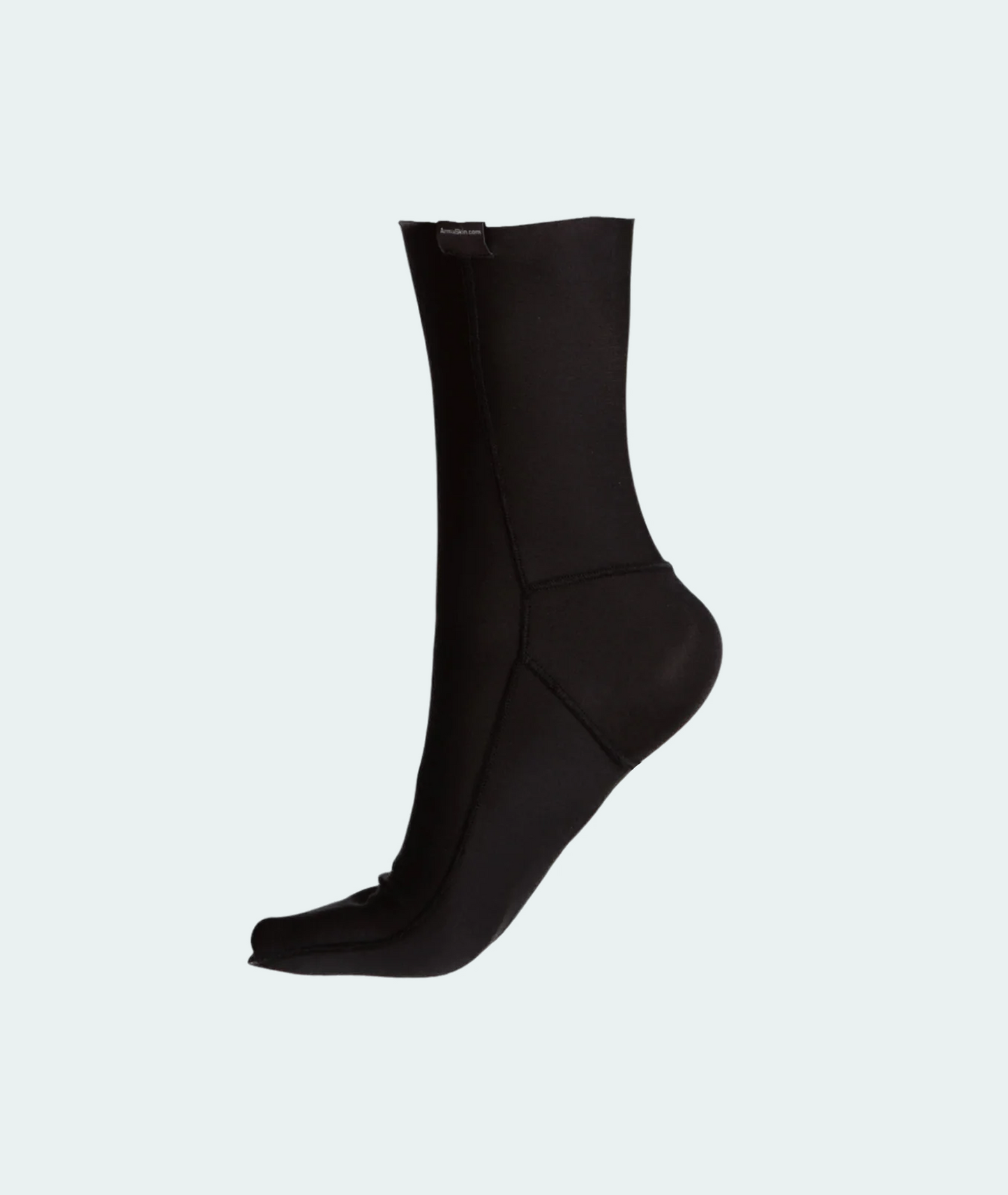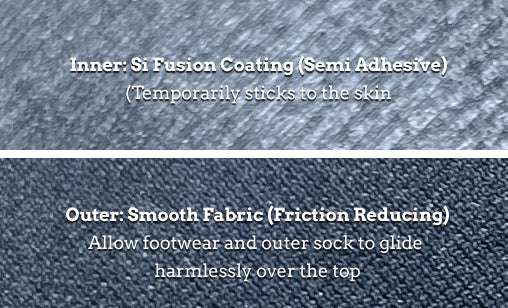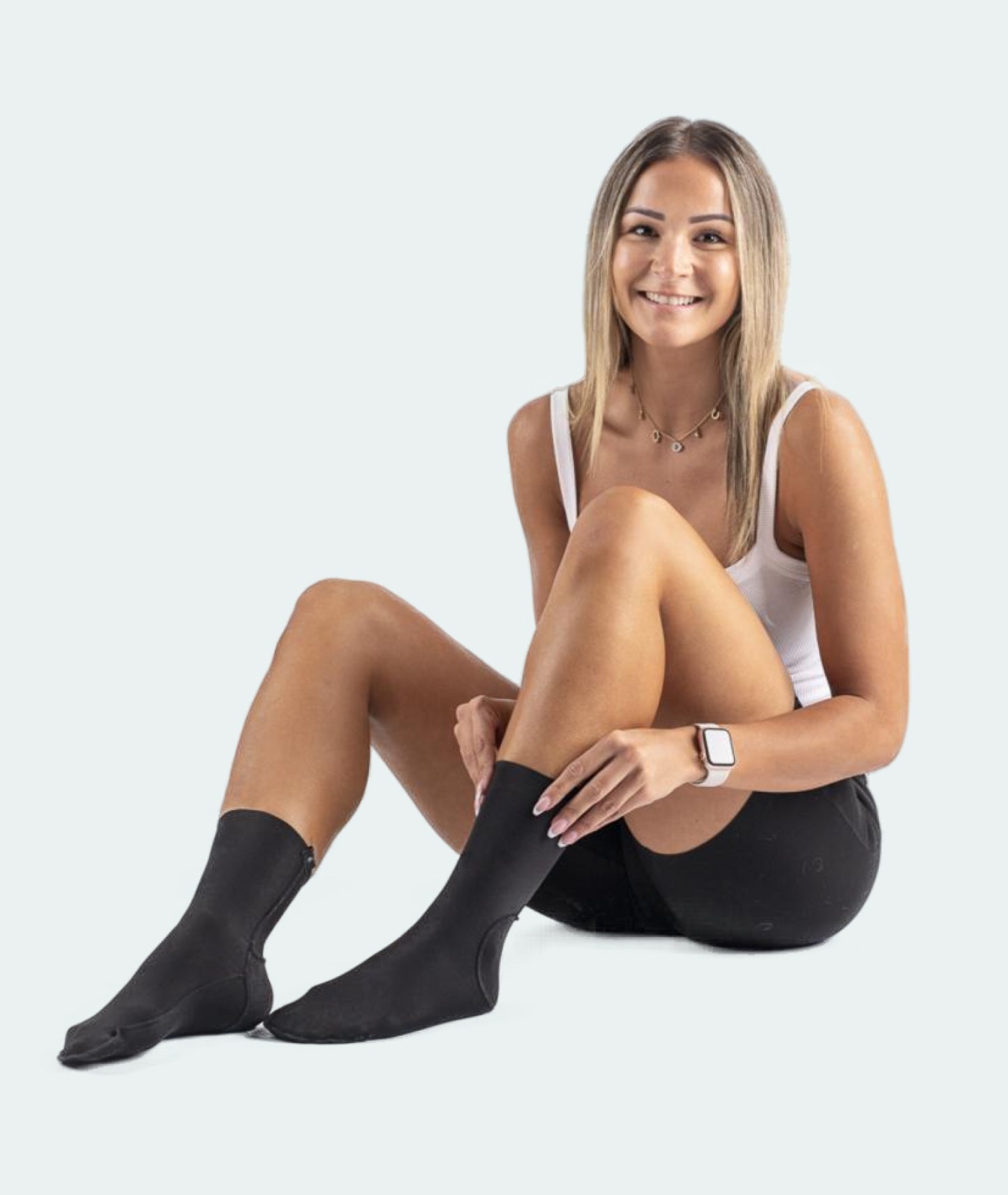As outdoor enthusiasts, we understand the importance of comfortable and blister-free feet during hikes. ArmaSkin liner socks are a fantastic choice for blister prevention, but what about the outer socks you pair them with? In this article, we’ll explore the best sock options to complement your ArmaSkin liners and keep your feet happy on the trail.
1. ArmaSkin Liner Socks: The Blister-Preventing Foundation
Before we dive into outer sock choices, let’s highlight the benefits of ArmaSkin liner socks:
Blister Prevention: ArmaSkin liners are designed to reduce shear forces between skin layers, minimizing the risk of blisters. They do this by having a very smooth outer surface and a very grippy inner surface.
Moisture wicking: ArmaSkin moisture-wicking properties also keep your feet dry, which is crucial for blister prevention.
In the
January 2024 ArmaSkin News we drew attention to the learned thesis of Rebecca Rushton that the fundamental causation of blisters is the drag on the skin layers of the attached bones (known as shear forces). This means that it is important for the foot to be able to shift in the outer sock and boot to dampen the shear forces.
ArmaSkin's outer surface facilitates this movement.
Now, let’s discuss the outer sock options:
2. What to Look for in Outer Socks
First some types of sock to avoid.
a. Compression Socks
While ArmaSkin liners work well with most sock types, there are exceptions. Avoid using compression socks over ArmaSkin liners. These socks may interfere with the ArmaSkin liner’s effectiveness and compromise comfort. They will provide little in the way of external cushioning.
b. Cotton and Cotton Blend Socks
Cotton socks tend to retain moisture which in turn decreases the cushioning effect of that outer sock. Cotton blend socks, although more breathable than pure cotton, still fall short in moisture management. Dry fabric has a lower coefficient of friction, enhancing overall comfort during your hike. For optimal blister prevention, choose socks that wick moisture away from your skin and into the atmosphere.
c. Third party toe socks
Whether you are using ArmaSkin standard liner socks or the ArmaSkin toe socks, neither are suitable to be worn within an outer toe sock.

Other things to consider:
a. Addressing Uncommon Foot Issues:
Consider your foot’s unique needs. If you have bunions, hammer toes, or other anatomical issues, ensure your footwear and outer socks accommodate these conditions. Properly fitting socks prevent rubbing and discomfort.
b. Filling the Gaps: Preventing Sliding and Friction
The key role of outer socks is to fill gaps within your boots with a comfort zone. This prevents your feet from aggressively sliding around but instead provides a dampening effect.
3. Consider Your Hiking Environment
When selecting outer socks to pair with your ArmaSkin liners, consider where you’ll be using them. Different environments call for specific sock features:
a. Weather Conditions
Cold Temperatures: If you expect chilly weather, prioritize warmth. Thicker socks provide better insulation. Remember that ArmaSkin liners, by reducing moisture next to the skin, can help keep your feet warm, especially in adverse conditions.
Hot Temperatures: Opt for thinner socks to prevent overheating.
b. Duration and Intensity of Hikes
Heavy Packs and Extended Trips: Carrying a heavy pack for multiple days impacts your sock choice. Opt for thicker hiking socks to cushion your feet during long treks.
Terrain Considerations: If you’ll be hiking through heavy grasses or overgrown areas, taller socks can protect your legs from scratches. For desert hikes with lightweight running shoes, shorter, breathable socks are ideal.
High-Intensity Activities: Fast packing or trail running demands thin, breathable socks that wick moisture efficiently.
Extended Distances and Travel Speeds: The more you exert yourself, the more perspiration accumulates in your footwear. Boots, especially mid or over-the-ankle styles, trap moisture. Even breathable waterproof membranes may struggle to vent this much perspiration. As a result, your socks might remain damp despite investing in breathable boots.
c. Special Circumstances
Military Rucking: If you’re required to wear regulation heavy boots (even in hot desert conditions), choose socks that balance comfort and durability.
4. Sock Materials and Designs
a. Wicking Characteristics and Drying Abilities
When planning hikes that involve water crossings, high humidity, or rainy conditions, pay close attention to your sock’s wicking and drying capabilities. Here are some considerations:
Wool: Wool, especially Merino Wool, is an excellent choice. It keeps your feet warm while efficiently wicking away moisture. The finer fibres of Merino Wool make it softer and more comfortable.
Synthetics: Synthetic materials are ideal if your feet tend to sweat a lot. They can outperform natural fibres in moisture-wicking and drying. Look for socks made from high-wicking synthetics.
Other natural fibres eg silk, bamboo: Can provide good wicking features and comfort but may be relatively expensive.
b. Sock Designs
Liner Socks:
These thin socks serve as the primary defence against blisters. Wear them under thicker socks. ArmaSkin liners, typically made of high-wicking synthetics, work well in this role. Silk liners are another option.
Trainer Socks:
Low-cut or no-show socks are suitable for day hikes or trail runs with lightweight trail shoes. For added abrasion protection, opt for ankle-length socks that you can fold over or wear full-length, depending on the terrain.
Crew Socks:
These mid-calf-length socks are the most common type. Ribbed at the top to prevent slipping, crew socks are generally accepted as the standard hiking sock length. They work well with any shoe or boot cut, but they provide extra protection in high-cut boots with thick cuffs above the ankles.
Mountaineering Socks:
Designed to extend over the calves, mountaineering socks are heavyweight and built to withstand rugged boots and cold conditions.
Sock structures:
Many brands and styles of sock have cleverly designed sections that may vary in thickness and weave. Such variations are driven by a combination of comfort and wear considerations. While it is not a conclusive feature it is reasonable to conclude that manufacturers of socks that comprise variations in the sock sections has given deeper thought to the overall effectiveness of the sock.
5. Sock Brands
While this list isn’t exhaustive, it provides a starting point for hikers seeking quality outer socks.
Remember to choose socks based on your specific hiking conditions, whether you’re exploring rugged trails or enjoying a leisurely walk. The right combination of ArmaSkin liners and outer socks ensures a comfortable and blister-free experience. Happy hiking!
| Company Name |
General Description |
Sock Material Types |
Website |
| Wildernesswear |
An Australian Made & Owned business since 1989, Wilderness Wear designs and self-manufactures premium outdoor clothing. |
Merino wool, synthetic |
Wilderness Wear |
| Darn Tough |
An American manufacturer of premium, all-weather outdoor and lifestyle socks. Known for their unconditional lifetime guarantee. |
Merino wool, synthetic |
Darn Tough |
| Wigwam |
Founded in 1905, Wigwam Mills produces socks primarily from treated merino wool. Known for innovation and quality. |
Merino wool, synthetic |
Wigwam Socks |
| Thorlo |
A family-owned technical performance sock company. Committed to foot protection and comfort. |
Merino wool, synthetic |
Thorlo |
| Smartwool |
American manufacturer, The Timberland Company, makes a wide range of outdoor gear including footwear and socks. |
Merino wool |
Timberland |
|
|
|
|




















